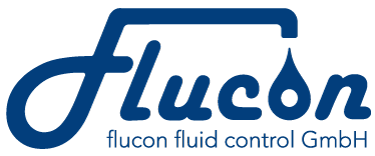Electrical breakdown in rolling bearings
EDM spark erosion as a problem of electric drives
Inverter-controlled motors are used in numerous technical areas. The generated electric field influences the bearings of the drive shaft. The lubricants used in these bearings are therefore not only mechanically but also electrically stressed.
In order to select a suitable lubricant, knowledge of the electrical fluid properties is required. The dielectric strength is of great importance here. This parameter indicates the external voltage above which a current flow occurs in the medium. This current flow causes damage to the bearing raceways (see below) and also contaminates the lubricant. The electrical load on the lubricants thus leads to premature aging and increased maintenance requirements.

Figure: Signs of wear on the bearing – (1) fluting, (2) corrugation and pitting, (3) crater formation in fluted area
The bearing currents that occur can be categorized as capacitive reloading currents, discharging currents (so-called electrical discharge machining or EDM currents), rotor-ground currents and circular bearing currents, whereby it is known that only the last three bearing currents have a damaging effect on the bearing.
In the type of damage phenomenon that occurs, the interaction between the tribological system, defined by the lubrication/friction condition, and the resulting electrical behavior plays a crucial role.
The causal relationship between the lubrication condition present in the rolling bearing and the type of bearing currents that occur has already been investigated by MEGT scientists at the Technical University of Kaiserslautern [Maschinenelemente und Getriebetechnik Berichte Bd. 20/2016, ISBN 978-3-95974-029-6] and can be illustrated by the following figure:

Figure: Contact scenarios in a rolling bearing
This clearly shows the temperature dependence of the frequency of discharge currents (red) with otherwise constant mechanical boundary conditions.
An increase in temperature in the otherwise constant system is accompanied by a reduction in lubricant viscosity and thus a reduction in the lubrication gap height. As a result, the investigated rolling bearing changes from the full lubrication condition to the mixed friction condition, which is illustrated by the exemplary lubrication gap profile (blue).
In addition to the temperature and viscosity, the speed and the load are also relevant influencing variables for the breakdown frequency.
Innovative testing: targeted EDM analyses with flucon
The E-Lub Tester can be used to selectively set the electrical load on a bearing and to record specific EDM frequencies (breakdown tendency) as a function of the variable operating variables (temperature, speed, mechanical load, electrical voltage). It is also possible to determine the breakdown voltage through a special ramp function.

Figure: EDM breakdown analysis with E-Lub Tester software
Since our team has been carrying out special analyses of viscosity and electrical fluid parameters as a function of temperature and pressure for many years, we are able to record the condition in the lubrication gap in the best possible way.
The basis for this, in addition to the characteristic data from our unique high-pressure laboratory, are the new investigations with the E-Lub Tester measuring set-up on the four-ball tester.

